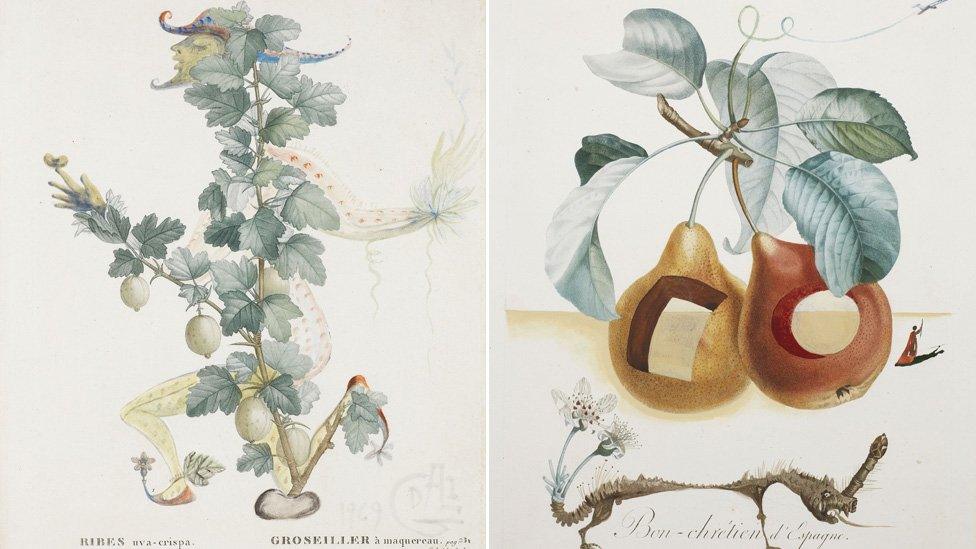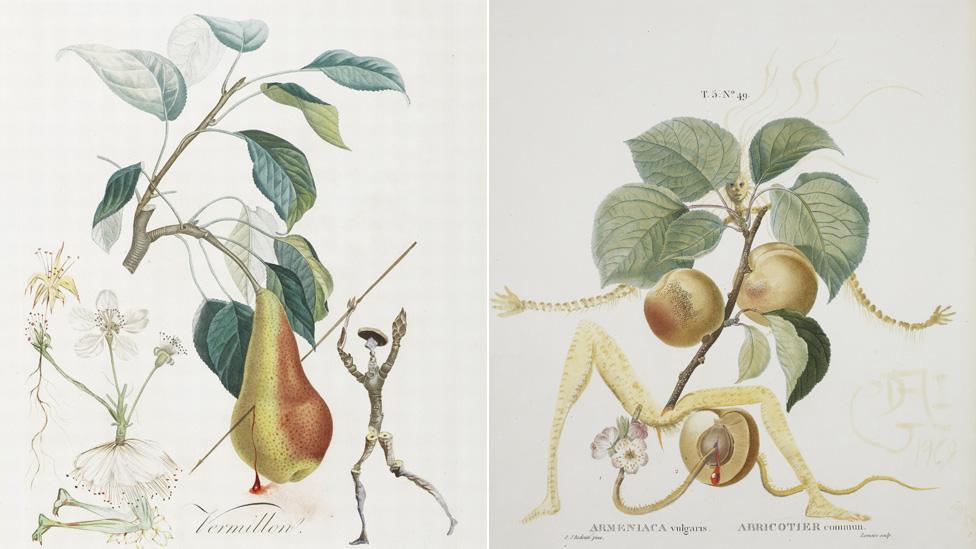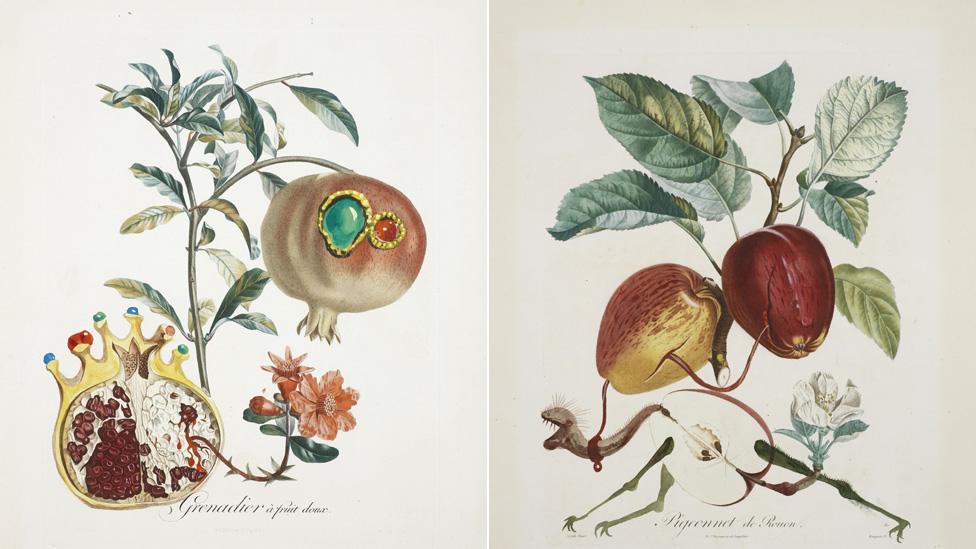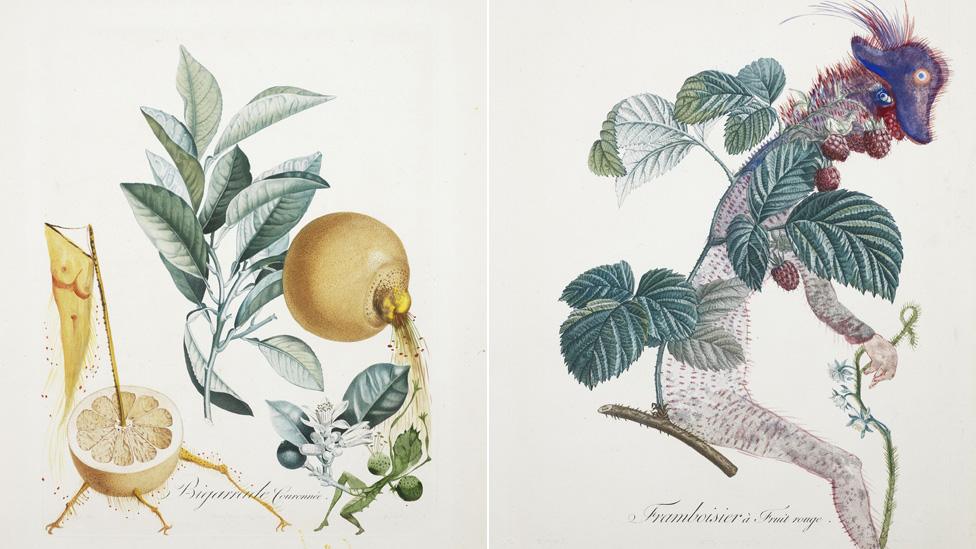In pictures: Salvador Dali fruit watercolours
- Published
![Wild Blackberries [L] and Penitent Peach](https://ichef.bbci.co.uk/ace/standard/976/mcs/media/images/68234000/jpg/_68234399_dali_blackberry_peach.jpg)
Fourteen original Salvador Dali watercolour fruit studies, unseen by collectors until now, are being sold at Bonhams, London, on Tuesday. They were commissioned in 1969 and 1970 but have since only been in private hands. The series is expected to make close to £1m. Warning: some of these images are explicit.

The compositions were commissioned by the publisher Jean Schneider for a series of lithographs with drypoint. They are a mixture of watercolour, gouache, printer's ink and 19th Century stipple engraving. Dali said of his works: "I see the human form in trees, animals: the animal and vegetable in the human. My art shows the metamorphosis that takes place."
![Fig Man [L] and Strawberry Heart](https://ichef.bbci.co.uk/ace/standard/976/mcs/media/images/68234000/jpg/_68234407_dali_fig_strawberry.jpg)
The "concept of illusionism" and metamorphosis are central to the collection, the auctioneer said. Dali claimed to have had the ability to see multiple meanings and patterns in single images, recalling a childhood ability to read shapes in the clouds of a summer storm.
![Pierrot Cherries [L] and Hasty Plum](https://ichef.bbci.co.uk/ace/standard/976/mcs/media/images/68234000/jpg/_68234406_dali_cherry_plum.jpg)
Dali's images include several of his themes, including the crutch, Don Quixote, jewels, forms sprouting chicken legs and the eye motif. He famously used the eye in the sequence of an eyeball slashed with a razor in Dali and Luis Bunuel's surrealist film Un Chien Andalou (1929), in the floating eyes in the dream scene designed for Hitchcock's film Spellbound (1945) and in the diamond-studded eye from his jewellery collection designed in the 1950s.

This series show Dali’s skill at taking the ordinary and subverting it. Bonhams suggested that his "obsession with a warped, sinister version of life" is perhaps rooted in his own history. The artist had an older brother, also named Salvador, who had died almost exactly nine months before Dali’s birth. When the artist was just five, he was taken to the grave by his parents and told he was a reincarnation. Dali came to perceive himself as a distorted version of his elder sibling, saying: “I myself am surrealism”.

William O’Reilly, director of Bonhams Impressionist department, said of the works: "These compositions are a fabulous illustration of Dali’s artistic approach. By overlaying such traditional images with his famous artistic vocabulary of dragons, hooded figures, crutches and weeping eyes, he gives us an insight into his own hyper-fertile imagination."

Bonhams said Dali was also adding "fantastic and illusory creatures to exceptionally precise and botanically correct reproductions", commenting on scientific discovery, a subject with which he was deeply fascinated. Bonhams director Mr O'Reilly added: "Most of all, these beautifully fresh images show Dali enjoying himself, poking fun at the demons and fairies lurking behind the straight-laced images of the 19th Century science.”